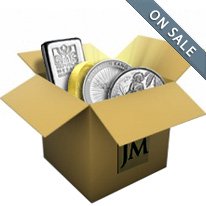Free Silver Price Widget For Your Website
This feature is only supported in the desktop browsers. Please visit this page in your desktop browser to retrieve the widget.
Share live silver prices with your website followers or on your blog, using our free silver price widget. To get started, please select one of the size dimensions from the drop-down menu below, and copy the code from the Widget Code text box and paste it into the desired position in your page. If you have any trouble, please contact us at support@jmbullion.com.
Widget Preview
Widget Code
Silver Prices in Malaysian Ringgit
The silver market is traded all over the world, and prices for the white metal are constantly on the move. Although silver is often traded in U.S. Dollars, the metal can be transacted in any currency on the globe. If you are in Malaysia, for example, you would likely see the price of silver quoted per ounce, gram or kilo in the local currency. Prices may, however, also be quoted in other key currencies such as dollars or euros. The most popular silver products with individual investors tend to be one ounce coins, rounds and bars. Larger investors may prefer 10 or 100 ounce silver bars.
The Malaysian Ringgit is the official currency of Malaysia and is issued by the Bank of Malaysia. The ringgit is named after an obsolete use of the term ringgit meaning “jagged.” This name makes reference to Spanish silver dollars that had serrated edges that were widely used in the 16th and 17th century during the Portuguese colonial period.
The Malaysian currency was formerly pegged to the U.S. Dollar. That peg came to an end in 2005, however, when China abandoned its renminbi peg to the dollar. The Malaysian Ringgit now operates using a managed float against several major currencies.
The Malaysian Ringgit is susceptible to volatility, and can be significantly affected by Chinese market volatility or economic issues. This is due to the fact that China is the country’s largest trading partner. The ringgit has not been tradable outside of Malaysia since 1998.
Silver Pricing in Malaysian Ringgit
The price of silver is always in motion. Although the market may see periods of sideways price action, the silver market can also see periods of large price fluctuations and market volatility.
Silver has two distinct sources of demand: Investment demand and industrial demand. Demand for silver can affect its price regardless of what currency it may be traded in. Investors, both institutional and individual, may look to silver as a means of further portfolio diversification and a potential hedge against inflation or declining paper currency values. Silver has, after all, been considered a reliable store of wealth and value for thousands of years.
Industrial buyers of silver may be in the market for the white metal due to its many industrial applications. Silver is currently used in a wide range of industries, including electronics, healthcare, solar energy, chemical production and more. It is quite likely that the number of potential applications for silver will expand, potentially creating more demand in the process.
Silver prices could also potentially be affected by any disruptions in the supply chain.
The Malaysian Economy
Malaysia has one of the largest economies in Asia, and it is considered a newly industrialized market economy. Malaysia’s economy is well-diversified, and its economy is highly competitive.
Malaysia has been the recipient of significant foreign investment, and the country has received high marks for ease of doing business.
The economy is heavily dependent on technology, and a significant amount of the nation’s labor force is involved in the production of electronics and electrical components. Some of Malaysia’s top exports include integrated circuits, palm oil, telephones, refined petroleum and petroleum gas.
Some of the country’s top imports include gold, crude petroleum and planes.
The Malaysian Government owns and operates several sovereign wealth funds that make both local and international investments. Malaysia also has one of the largest pension funds in the world.
As further technological advancements are made in the country and as its economy expands, the demand for silver could potentially increase significantly. The white metal may potentially be used in numerous electrical components produced by Malaysia currently or perhaps in the future as more applications are discovered. Silver may also potentially play a more prominent role for investors as a diversification tool.
Malaysia has a large gold market, and jewelry is very popular in the country. Demand for silver jewelry could potentially also increase as prices are significantly lower than that of gold.
World Silver Prices
- Arab Emirates Silver Prices
- Australia Silver Prices
- Brazil Silver Prices
- Canada Silver Prices
- Chile Silver Prices
- China Silver Prices
- Czech Republic Silver Prices
- Denmark Silver Prices
- Europe Silver Prices
- Hong Kong Silver Prices
- Hungary Silver Prices
- India Silver Prices
- Indonesia Silver Prices
- Israel Silver Prices
- Japan Silver Prices
- Malaysia Silver Prices
- Mexico Silver Prices
- New Zealand Silver Prices
- Norway Silver Prices
- Pakistan Silver Prices
- Philippines Silver Prices
- Poland Silver Prices
- Russia Silver Prices
- Singapore Silver Prices
- South Africa Silver Prices
- South Korea Silver Prices
- Sweden Silver Prices
- Switzerland Silver Prices
- Taiwan Silver Prices
- Thailand Silver Prices
- Turkey Silver Prices
- United Kingdom Silver Prices
- United States Silver Prices










